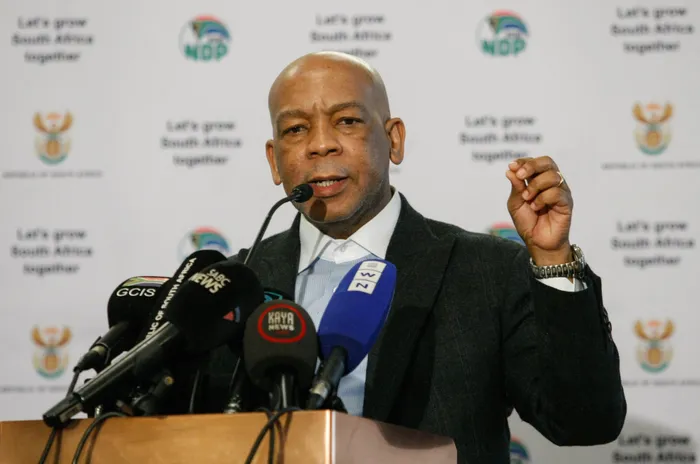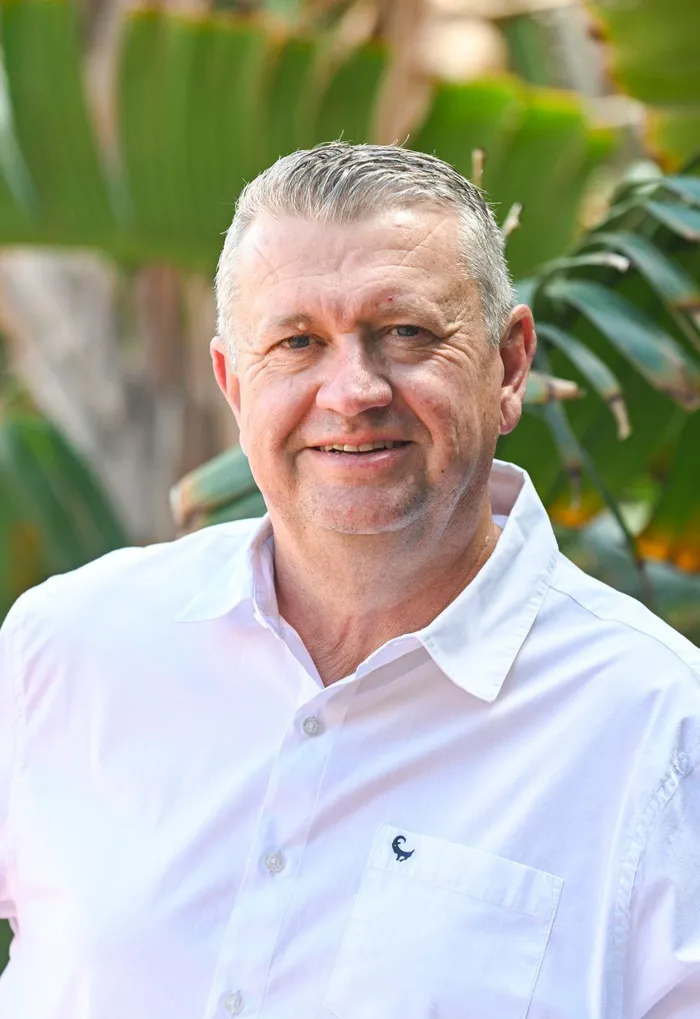The Integrated Resource Plan 2025: feasible or a push closer to the fiscal cliff?

Electricity and Energy minister Kgosientsho Ramokgopa.
Image: Jacques Naude / Independent Newspapers
On Sunday October 19, 2025, Minister of Electricity and Energy Kgosientsho Ramakgopa presented the Integrated Resource Plan (IRP) 2025 during a ministerial briefing in Pretoria. A reliable power system underpins economic growth and high electricity consumption correlates with improved quality of life.
The IRP’s stated objective is to ensure security of supply by balancing supply and demand while optimising environmental impact and total cost of supply. In principle, the IRP seeks to secure supply at the lowest possible cost within environmental and other constraints. In practice, the IRP 2025 does not achieve this. The plan proposes increasing nuclear capacity from 1.8 GW to 7 GW by 2039, a net addition of 5.2 GW.
Global experience shows that nuclear projects almost always cost double the original budget and take twice as long as planned. Two slides in the minister’s presentation promoted the nuclear case yet offered no evidence of low cost or shorter construction periods, and therefore not securing supply.
Installed coal-fired capacity is projected at 41 GW by 2039, only slightly below today’s 45 GW. About 13 GW of ageing, inefficient coal capacity will retire over the next eight years, but no new coal projects appear in the plan to sustain the total. Instead, the IRP proposes a “clean coal technologies” demonstration plant by 2030 to explore alternatives to conventional flue-gas desulphurisation (FGD).
There is, however, no such thing as clean coal. These technologies can be better described as more efficient. Super-critical pulverised-fuel (PF) plants operate at higher temperatures and pressures, improving efficiency but still release sulphur oxides (SOx), nitrogen oxides (NOx), and CO₂ while consuming vast quantities of water and harming the health of nearby communities. Circulating fluidised-bed combustion (CFBC) technology, another so-called cleaner approach, uses smaller boilers and binds SOx emissions with limestone during combustion, avoiding FGD as a separate step. Super-critical operation is rare in CFBC, and South Africa currently runs only PF technology. A clean coal demonstration plant is throwing good money after bad.
The inclusion of 17 GW of gas-to-power capacity operating at a minimum 50 percent load factor would require large LNG import and regasification terminals, exposing the country to foreign-exchange risk and balance-of-payments pressures linked to imported gas. Taken together with the careful wording chosen by the minister, these provisions reveal the mindset of the seventh administration. The IRP signals a return to state-led energy planning rather than enabling a competitive market. It contradicts government’s own policy commitment to unbundle Eskom and increase competition in a market-oriented electricity sector.
Based on the ministerial briefing, a likely scenario emerges. The Independent Power Producer (IPP) Office will shift focus from private-sector generation procurement to include the Independent Transmission Programme (ITP). The minister may invoke Section 34 powers to authorise Eskom Green to build state-owned renewable facilities like solar, wind, and battery storage, while Eskom Generation develops nuclear projects, both using grid infrastructure established under the ITP. Distributed generation, currently the fastest-growing segment through private wheeling arrangements, is restricted to 8 percent of national generation by 2039.
The minister described the IRP 2025 as the largest investment in post-apartheid South Africa, an investment of R2.2 trillion. He stated that it would be off the government’s balance sheet and funded by electricity users. Whether such an investment is commercially viable or socially defensible remains uncertain. Despite early success in expanding electricity access to 86 percent of households, South Africa’s per-capita electricity use remains among the lowest globally, and GDP per capita ranks in the bottom quartile. Residential consumption is lower than that of Paraguay and China, while the Human Development Index could improve further.
The IRP 2025 will not change this trajectory. Instead, it is likely to increase policy uncertainty, reduce security of supply, raise electricity prices, and delay the addition of new clean-energy capacity. The result could be continued stagnation in industrial output, reduced competitiveness, more job losses and further strain on already-stressed municipal and national finances. By reinstating centralised control and state-driven generation projects, the IRP 2025 risks undermining the rapid, decentralised innovation that has recently brought private investment and technological progress into the sector. Rather than opening the grid to competition and flexibility, the plan concentrates authority within the state while transferring financial risk to consumers and tax payers.
If implemented as presented, the IRP 2025 may deliver neither affordable electricity nor long-term sustainability. It may instead deepen dependence on costly megaprojects, delay the renewable rollout, and expose South Africa to greater fiscal and foreign-exchange risk. What was announced as a vision for secure, affordable power could become a blueprint for increased uncertainty, rising costs and shrinking resilience. Unless it is fundamentally revised, the Integrated Resource Plan 2025 may not be a plan for progress but a push closer to the edge of the energy and fiscal cliff. Our saving grace could be that the legislation refers to the IRP as indicative and not deterministic.

Thomas Garner holds a Mechanical Engineering degree from the University of Pretoria and an MBA from the University of Stellenbosch Business School.
Image: Supplied
Thomas Garner holds a Mechanical Engineering degree from the University of Pretoria and an MBA from the University of Stellenbosch Business School. Thomas is self-employed focusing on energy, energy related critical minerals, water and communities. He is a Fellow of the South African Academy of Engineering and a Management Committee member of the South African Independent Power Producers Association.
*** The views expressed here do not necessarily represent those of Independent Media or IOL.
BUSINESS REPORT